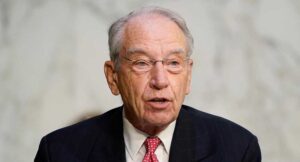Asia continues to be a pivotal player in the global manufacturing ecosystem, especially in the medical device industry.
Despite shifting trends (think reshoring or nearshoring), geopolitical challenges (particularly in China), and the rise of localized manufacturing hubs (in region-for-region manufacturing), Asia has remained an industrial stalwart for its unique combination of cost efficiency, technological expertise, and scalability. Of course, an argument can be made that China subsidizes its cost efficiency through direct or indirect government support and/or currency manipulation but that debate can transpire in a future column.
As companies weigh incorporating reshoring/nearshoring in their post-Covid supply chain strategies to avoid potential tariff sanctions, it is worth asking the obvious question of whether Asia medtech manufacturing will continue to be relevant in the long-term.
The region’s ongoing relevance is supported by its ability to adapt. As it is with life itself, long-term survival requires flexibility, reinvention, and adaptation. What’s interesting is that these new levels of adaptation are not necessarily choreographed or coordinated. For geopolitical reasons, many Asian countries involved in the medtech industry are often “frenemies” at best and fierce competitors at their worst.
The key Asian manufacturing economies include Japan, China, Vietnam, Singapore, Malaysia, Thailand, Indonesia, and India. It is hard to fathom, however, that any of these countries behave in the overall best interests of the global economy or that of the region. Rather, there seems to be a “country first” mindset (e.g., China first, Japan first, etc.).
Many Asian countries have historically created a competitive advantage for native manufacturers. In the 1980s, many U.S. companies fretted over Japan’s unfair playing field and the perception that some Japanese firms were copying American technology. That concern has now shifted from Japan to some other countries in the region, with China being the most notable alleged offender.
In weighing the aformentioned factors alone, President Trump’s “America first” policies make a bit more sense. However, his administration must carefully balance efforts to create a level playing field without overdoing it. For tariffs, the motive appears to be fair play; to the Trump Administration, fair trade is not very fair if tariffs/subsidies are one-sided. The goal should be free and balanced fair trade with every country that wants it. Hopefully, this is the current Administration’s objective.
Regardless of whether Asia partakes in the “American First Trade Policy,” the region will continue to be a key part of the global medtech supply chain strategy. It should be noted that many Asian countries have evolved to align with the industry’s rigorous demands, are finding ways to leverage advanced technologies, and are upholding stringent regulatory standards critical to the medical device sector. As such, this region’s success is important to the industry as a whole.
The Asia-Pacific region has been and will continue to be relevant in the global medical device manufacturing order, thanks to its international supply chain strategy. One of the keys to global success for any medical device company with worldwide aspirations is the ability to think global and act local. For the supply chain, this means manufacturing “in the region” for sales in the region. And though Trump’s tariffs may be contributing to this mindset, “in region, for region” production was actually not started by America’s 47th president. Many Asian countries (and others) have historically tried to give local manufacturing a boost through rules and subsidies to improve their homeland’s production capabilities and competitive edge.
Asia’s relevance to the global medtech supply chain is due mainly to the region’s diversified manufacturing base. Its importance is not the byproduct of a single country’s dominance or a coordinated effort, but rather the combination of efforts from each individual country and the ways in which these players participate in the international medical device manufacturing ecosystem. Some examples follow.
China: China is simply too big to be ignored—its medical device market is currently the world’s second-largest. The country got a “headstart” in manufacturing capability earlier this century after many “Western world” companies began production operations there. Consequently, China has high volume competency and intellectual know-how (regardless of the general consensus on how that IP was obtained). For its own political purposes, the Chinese government prefers its own companies in local markets.
Go-Forward Relevance: (1) The world’s second-largest market attracts interest from all medical segments for locally-produced finished goods; (2) High-volume production efficiency exists for low-cost components to sell internationally; and (3) China has the ability to manipulate its currency to survive tariffs.
Singapore: Often referred to as the “Switzerland of Asia,” Singapore does a good job of catering to the needs of its APAC neighbors as well as global international players in Europe and North America. Due to its small size, it is important for the island country to have lots of friends and few enemies. To remain competitive, Singapore must continually find ways to innovate and be creative.
Go-Forward Relevance:(1) Maintains good relations with the world’s largest markets—the United States, Europe, India, Japan, and China; (2) Invests (subsidizes) innovation to help its own companies maintain competitiveness through “Industry 4.0” (automation, robotics, etc.); and (3) Leverages neighboring low-cost wages (i.e. Malaysia, Indonesia, etc.) to lower total manufacturing expenses for medical solutions where labor remains a key part of the overall bill of material costs.
India: While it has made considerable strides in pharmaceutical manufacturing (for better or worse), India still lags behind in medical device production. However, a country with the resources and potential market size of India should never be discounted. India has an advantage in digital health, as it really started to modernize during the digital revolution. When compared to rural parts of the U.S. with dated infrastructure, some regions in India are more sophisticated in digital communications because they never had the means to install 20th century hard-wired infrastructure. Thanks to centers of excellence in software in places like Bangalore, India is often a leader in developing digital health solutions. Since the country tends to “OEM” its solutions, the Western world doesn’t always recognize India’s achievements in this area.
Go-Forward Relevance:(1) Digital capabilities have given some Indian medical companies a foothold in recent medical devices, which tend to be both hardware- and software-based; (2) India’s growth and market size potential cannot be ignored; and (3) As long-time competitors, India is motivated to beat China whenever possible.
SE Asia: As China has fallen out of favor during the past decade, many countries in this area are finding ways to participate in the global medtech industry. These players include Indonesia, Malaysia, Thailand, Vietnam, and others. Currently, the competitive advantage here is lower wages but as this region develops into a manufacturing powerhouse, this region will surely find ways to innovate and compete.
Go-Forward Relevance:(1) Countries in this part of the world support global supply chain strategies in their “China Plus One” activities. In some cases, international companies will produce “in China, for China” (market) but manufacture outside of China for their other regional (and sometimes global) production requirements.
Pacific Rim: Encompassing countries like Japan, South Korea, and Taiwan, this region tends to offer advanced technology but is highly threatened by China. Given their inherent cost structures, these locales must find creative ways to innovate and often do so.
Go-Forward Relevance:(1) Providing technological advancements to healthcare for their own aging demographics first, and then providing that technology to the West for further adoption and enhancement.
Asia’s involvement in the medical device manufacturing industry is producing both headwinds (tariffs, nearshoring/reshoring, EU regulations, etc.) and tailwinds (healthcare demographics, smart factories, and supply chain strategies) that will allow Far Eastern economies to maintain their relevance. President Trump’s highly-publicized tariffs will undoubtedly be impactful but these countries will find ways to survive, adapt, and even thrive.
Asia’s economic evolution and role in the global manufacturing order not only will benefit the Eastern Hemisphere, but also the global medical device industry as it strives to meet the challenges of 21st century healthcare. Medical Product Outsourcing









